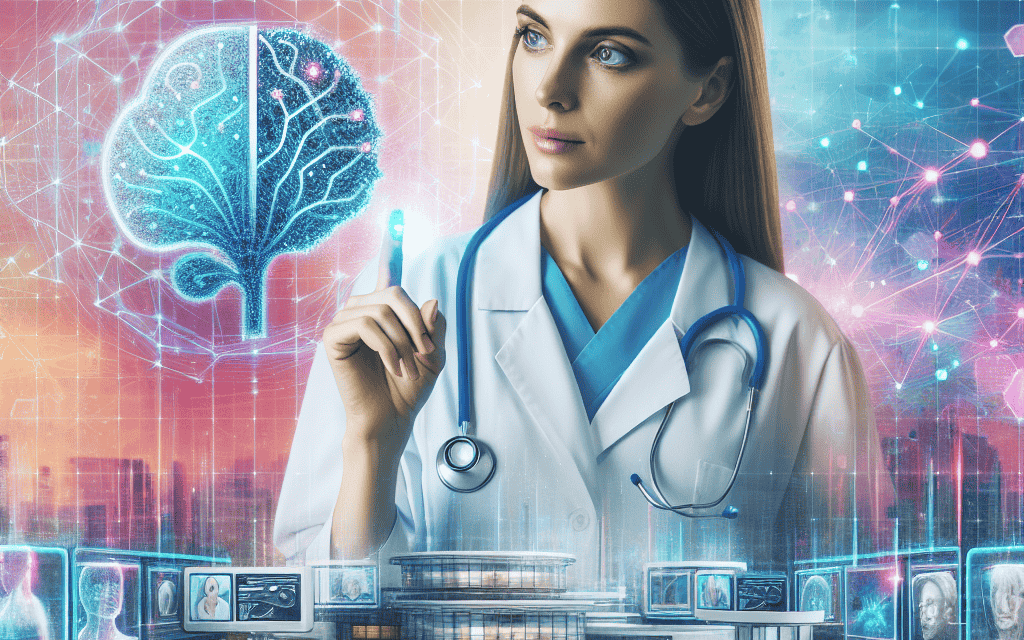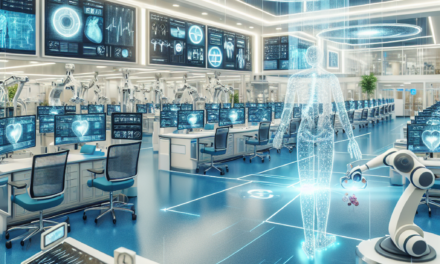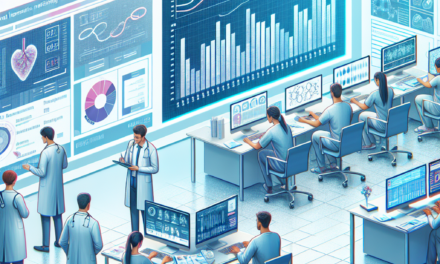Transforming Healthcare: The Role of Digital Innovations and AI
The healthcare industry is undergoing a significant transformation driven by digital innovations and artificial intelligence (AI). These advancements are reshaping how healthcare is delivered, improving patient outcomes, and enhancing operational efficiencies. This article explores the multifaceted role of digital innovations and AI in healthcare, focusing on five key areas: telemedicine, electronic health records (EHRs), AI in diagnostics, personalized medicine, and healthcare data analytics. Each section will delve into the current state, challenges, and future potential of these innovations.
1. Telemedicine: Bridging the Gap in Healthcare Access
Telemedicine has emerged as a vital component of modern healthcare, particularly highlighted during the COVID-19 pandemic. It allows patients to consult healthcare providers remotely, breaking down geographical barriers and improving access to care.
Telemedicine encompasses various services, including video consultations, remote monitoring, and mobile health applications. The technology enables patients to receive timely medical advice without the need for physical visits, which is especially beneficial for those in rural or underserved areas.
- Increased Access to Care: Telemedicine has significantly increased access to healthcare services. According to a report by the American Medical Association, telehealth visits surged by 154% in March 2020 compared to the previous year. This surge demonstrates how telemedicine can provide immediate care to patients who might otherwise face barriers to access.
- Cost-Effectiveness: Telemedicine can reduce healthcare costs for both providers and patients. A study published in the Journal of Medical Internet Research found that telehealth consultations can save patients an average of $100 per visit when considering travel and time off work.
- Improved Patient Engagement: Digital platforms facilitate better communication between patients and providers. Patients can easily schedule appointments, access their medical records, and receive reminders for follow-up care, leading to improved adherence to treatment plans.
Despite its advantages, telemedicine faces challenges, including regulatory hurdles, reimbursement issues, and concerns about data privacy. However, as technology continues to evolve, these challenges are being addressed. For instance, many states have enacted temporary measures to expand telehealth coverage, and ongoing discussions about permanent policy changes are underway.
Looking ahead, the future of telemedicine appears promising. Innovations such as augmented reality (AR) and virtual reality (VR) are being explored to enhance remote consultations. For example, AR can assist surgeons in visualizing complex procedures, while VR can provide immersive training experiences for medical professionals.
2. Electronic Health Records (EHRs): Streamlining Patient Information
Electronic Health Records (EHRs) have revolutionized how patient information is stored, accessed, and shared among healthcare providers. EHRs replace traditional paper records, offering a digital solution that enhances the efficiency and accuracy of patient data management.
One of the primary benefits of EHRs is the ability to consolidate patient information in a single, accessible location. This centralization allows healthcare providers to quickly retrieve patient histories, medications, allergies, and lab results, leading to more informed decision-making.
- Improved Coordination of Care: EHRs facilitate better communication among healthcare providers. For instance, a patient seeing multiple specialists can have their records shared seamlessly, ensuring that all providers are on the same page regarding the patient’s treatment plan.
- Enhanced Patient Safety: EHRs can reduce the risk of medical errors. Features such as clinical decision support systems alert providers to potential drug interactions or allergies, promoting safer prescribing practices.
- Data Analytics and Reporting: EHRs enable healthcare organizations to analyze patient data for quality improvement initiatives. For example, hospitals can track readmission rates and identify areas for improvement in patient care.
However, the implementation of EHRs is not without challenges. Many healthcare providers face difficulties with interoperability, where different EHR systems cannot communicate effectively. This lack of standardization can hinder the seamless exchange of information, ultimately impacting patient care.
To address these challenges, initiatives are underway to promote interoperability standards. The Office of the National Coordinator for Health Information Technology (ONC) has introduced regulations aimed at improving data sharing among EHR systems. As these efforts progress, the potential for EHRs to transform healthcare delivery will continue to grow.
3. AI in Diagnostics: Revolutionizing Disease Detection
Artificial intelligence is making significant strides in the field of diagnostics, offering tools that enhance the accuracy and speed of disease detection. AI algorithms can analyze vast amounts of medical data, identifying patterns that may be missed by human clinicians.
One of the most promising applications of AI in diagnostics is in imaging analysis. AI-powered tools can assist radiologists in interpreting medical images, such as X-rays, MRIs, and CT scans. For example, a study published in Nature demonstrated that an AI algorithm outperformed human radiologists in detecting breast cancer in mammograms.
- Early Detection of Diseases: AI can facilitate the early detection of diseases, leading to better patient outcomes. For instance, AI algorithms have been developed to identify early signs of diabetic retinopathy, a condition that can lead to blindness if not treated promptly.
- Reducing Diagnostic Errors: AI can help reduce diagnostic errors by providing clinicians with additional insights. A study in JAMA Network Open found that AI-assisted diagnosis reduced the rate of misdiagnosis in skin cancer cases.
- Streamlining Workflow: AI can automate routine tasks, allowing healthcare providers to focus on more complex cases. For example, AI can triage patients based on their symptoms, directing them to the appropriate level of care.
Despite the potential benefits, the integration of AI in diagnostics raises ethical concerns, particularly regarding data privacy and the potential for bias in algorithms. Ensuring that AI systems are trained on diverse datasets is crucial to mitigate these risks and promote equitable healthcare outcomes.
As AI technology continues to evolve, its role in diagnostics is expected to expand. Future developments may include AI systems that can integrate data from various sources, such as EHRs and wearable devices, to provide a comprehensive view of a patient’s health status.
4. Personalized Medicine: Tailoring Treatments to Individuals
Personalized medicine represents a paradigm shift in healthcare, moving away from a one-size-fits-all approach to treatments tailored to individual patients. This approach leverages genetic, environmental, and lifestyle factors to develop targeted therapies that are more effective and have fewer side effects.
Advancements in genomics and biotechnology have paved the way for personalized medicine. For instance, genetic testing can identify specific mutations associated with certain diseases, allowing healthcare providers to prescribe targeted therapies. A notable example is the use of targeted therapies in cancer treatment, where drugs are designed to target specific genetic alterations in tumors.
- Improved Treatment Efficacy: Personalized medicine has shown promise in improving treatment outcomes. A study published in the New England Journal of Medicine found that patients with non-small cell lung cancer who received targeted therapies based on genetic testing had significantly better survival rates compared to those receiving standard chemotherapy.
- Minimizing Adverse Effects: By tailoring treatments to individual patients, personalized medicine can reduce the risk of adverse effects. For example, pharmacogenomics studies how genes affect a person’s response to drugs, enabling providers to select medications that are more likely to be effective and safe for each patient.
- Empowering Patients: Personalized medicine empowers patients by involving them in their treatment decisions. Patients can better understand their health conditions and treatment options, leading to increased engagement and adherence to treatment plans.
However, the implementation of personalized medicine faces challenges, including high costs and limited access to genetic testing. Additionally, ethical considerations surrounding genetic data privacy must be addressed to build trust among patients.
Looking forward, the future of personalized medicine is bright. As technology advances, the cost of genetic testing is expected to decrease, making it more accessible to a broader population. Furthermore, ongoing research into the human genome will continue to uncover new insights that can inform personalized treatment strategies.
5. Healthcare Data Analytics: Driving Informed Decision-Making
Healthcare data analytics involves the systematic analysis of health data to derive insights that can inform decision-making and improve patient care. With the increasing volume of health data generated from various sources, including EHRs, wearables, and clinical trials, data analytics has become essential for healthcare organizations.
Data analytics can be categorized into three main types: descriptive, predictive, and prescriptive analytics. Each type serves a unique purpose in enhancing healthcare delivery.
- Descriptive Analytics: This type of analytics focuses on summarizing historical data to identify trends and patterns. For example, hospitals can analyze patient admission rates to determine peak times and allocate resources accordingly.
- Predictive Analytics: Predictive analytics uses historical data to forecast future outcomes. For instance, machine learning algorithms can predict which patients are at risk of readmission based on their medical history and social determinants of health.
- Prescriptive Analytics: Prescriptive analytics goes a step further by recommending actions based on data analysis. For example, healthcare organizations can use prescriptive analytics to optimize staffing levels based on predicted patient volumes.
The benefits of healthcare data analytics are substantial. Organizations that leverage data analytics can improve operational efficiencies, enhance patient outcomes, and reduce costs. A report by McKinsey & Company found that healthcare organizations that effectively use data analytics can achieve a 10-20% reduction in costs while improving patient satisfaction.
However, challenges remain in implementing data analytics in healthcare. Issues such as data silos, lack of standardization, and concerns about data privacy can hinder the effective use of analytics. To overcome these challenges, healthcare organizations must invest in robust data governance frameworks and foster a culture of data-driven decision-making.
As technology continues to advance, the potential for healthcare data analytics will only grow. Innovations such as artificial intelligence and machine learning will enhance the ability to analyze complex datasets, leading to more informed decision-making and improved patient care.
Conclusion
The transformation of healthcare through digital innovations and AI is not just a trend; it represents a fundamental shift in how care is delivered and experienced. Telemedicine is breaking down barriers to access, EHRs are streamlining patient information management, AI is revolutionizing diagnostics, personalized medicine is tailoring treatments to individuals, and data analytics is driving informed decision-making.
As these technologies continue to evolve, they hold the potential to improve patient outcomes, enhance operational efficiencies, and create a more equitable healthcare system. However, addressing the challenges associated with these innovations—such as regulatory hurdles, data privacy concerns, and the need for interoperability—will be crucial for realizing their full potential.
In summary, the role of digital innovations and AI in transforming healthcare is profound. By embracing these advancements, healthcare providers can deliver more effective, efficient, and patient-centered care, ultimately leading to a healthier society.





